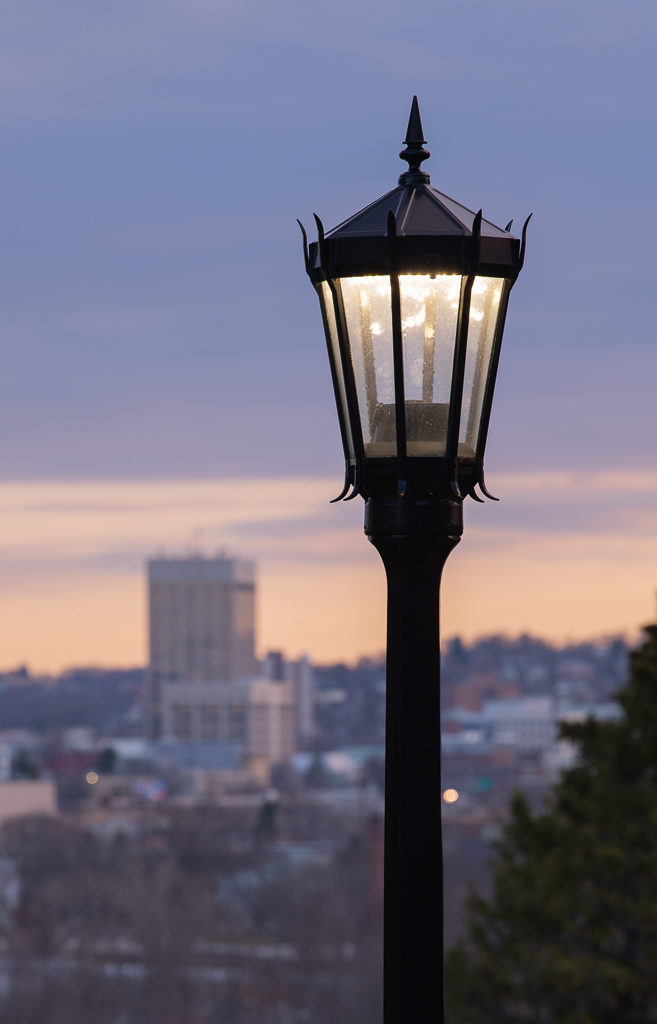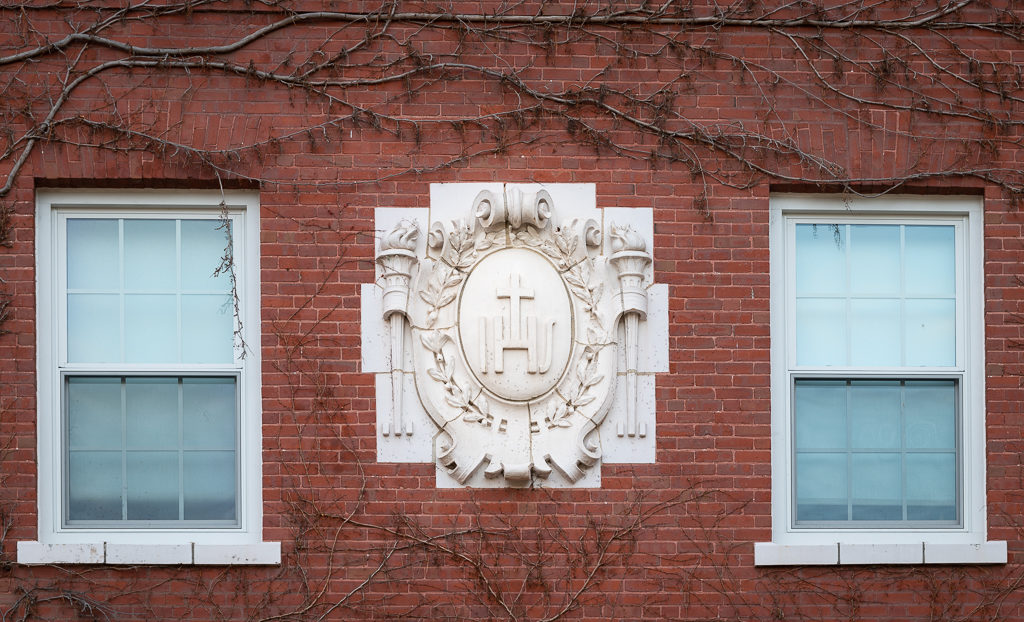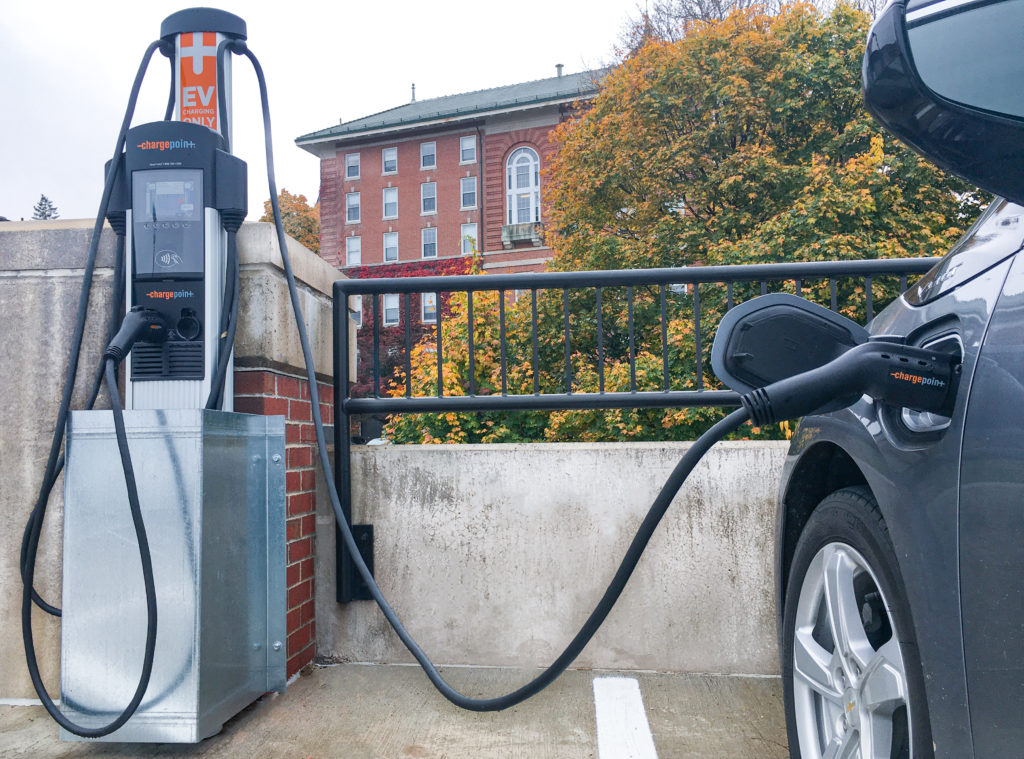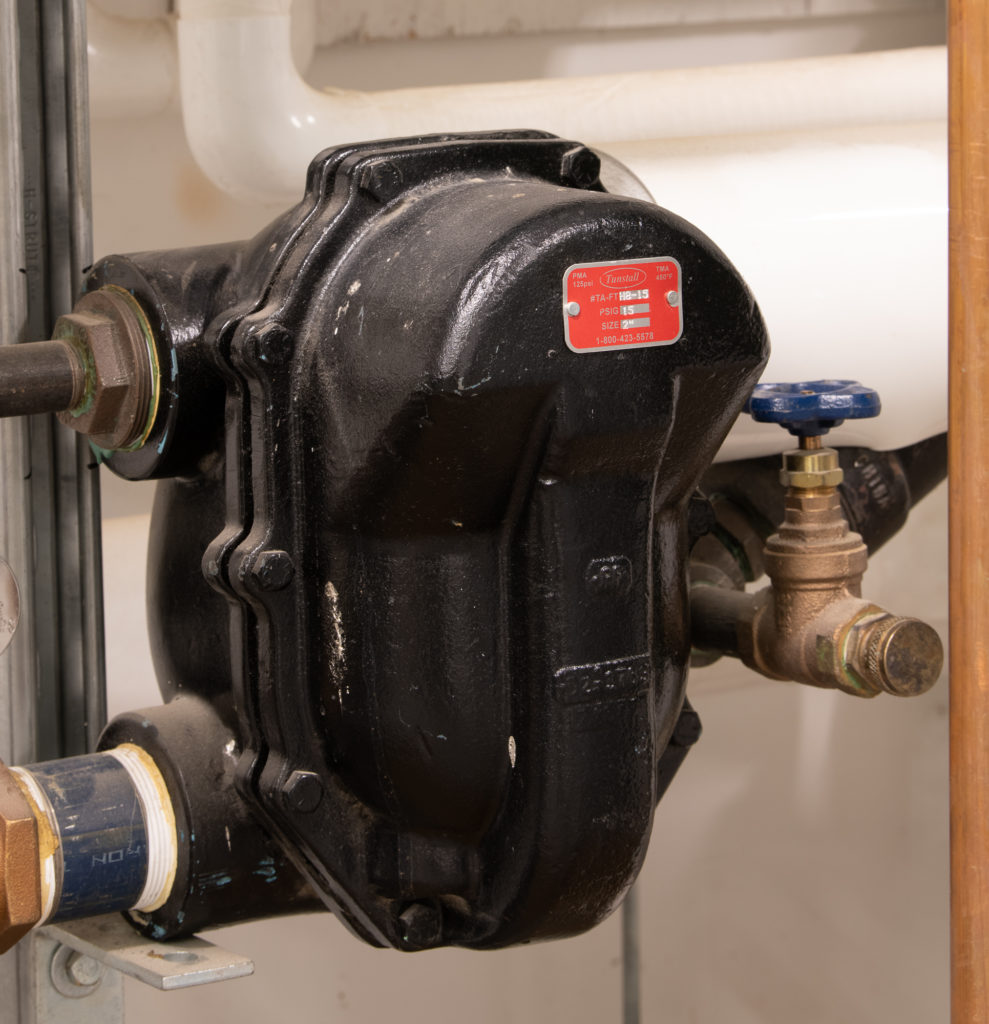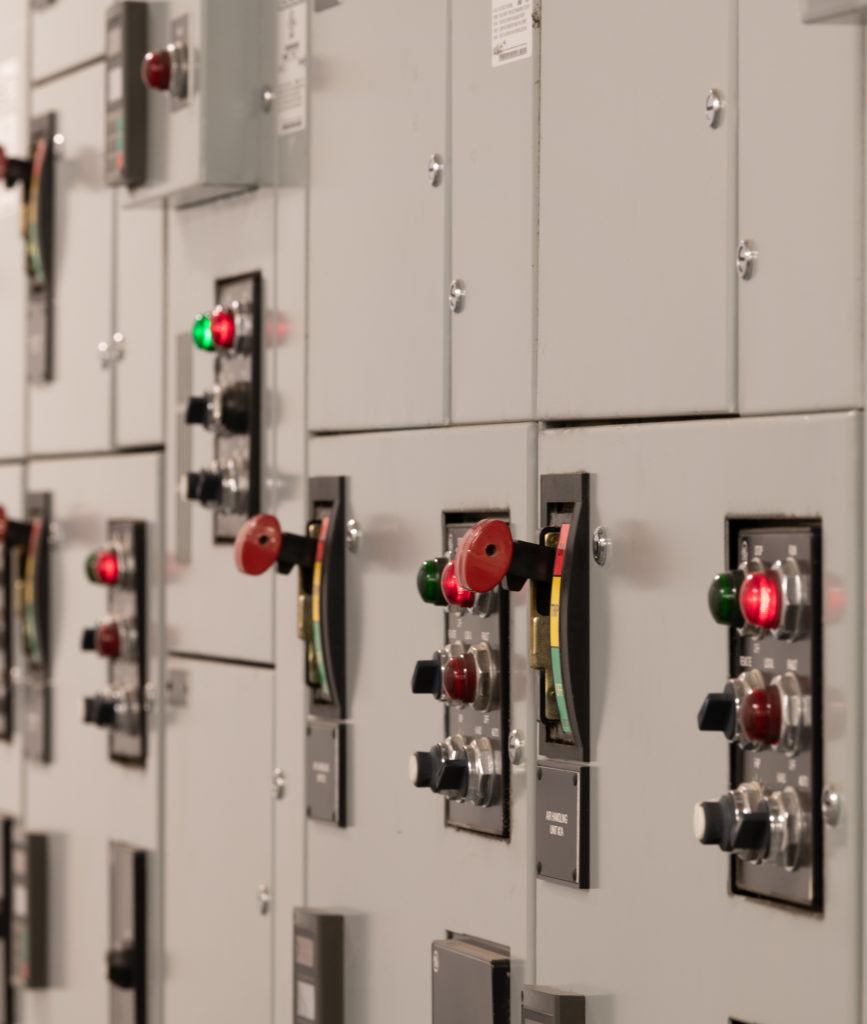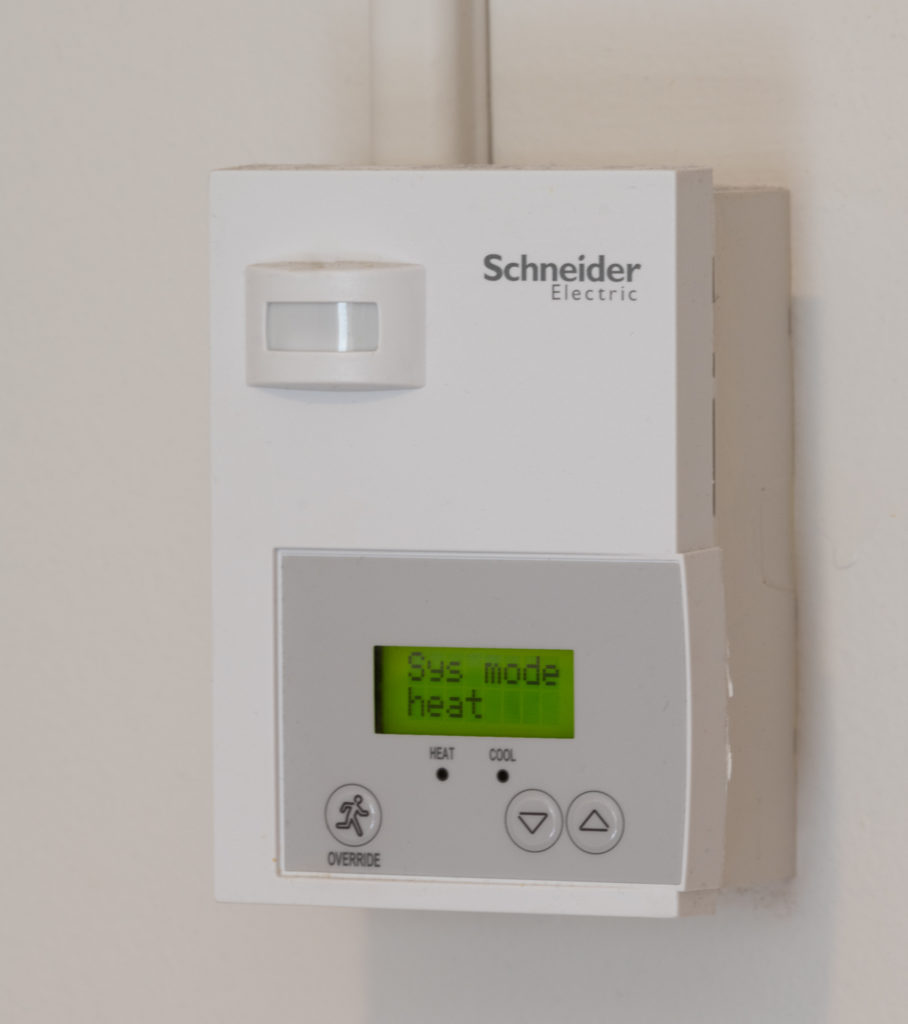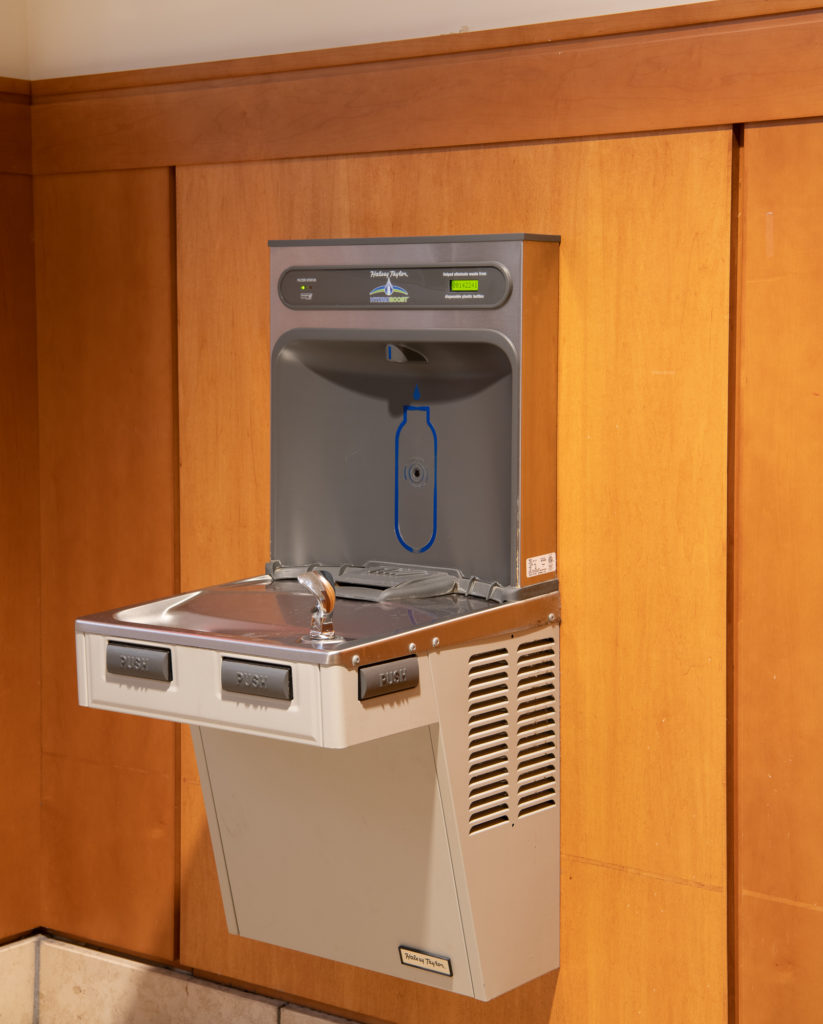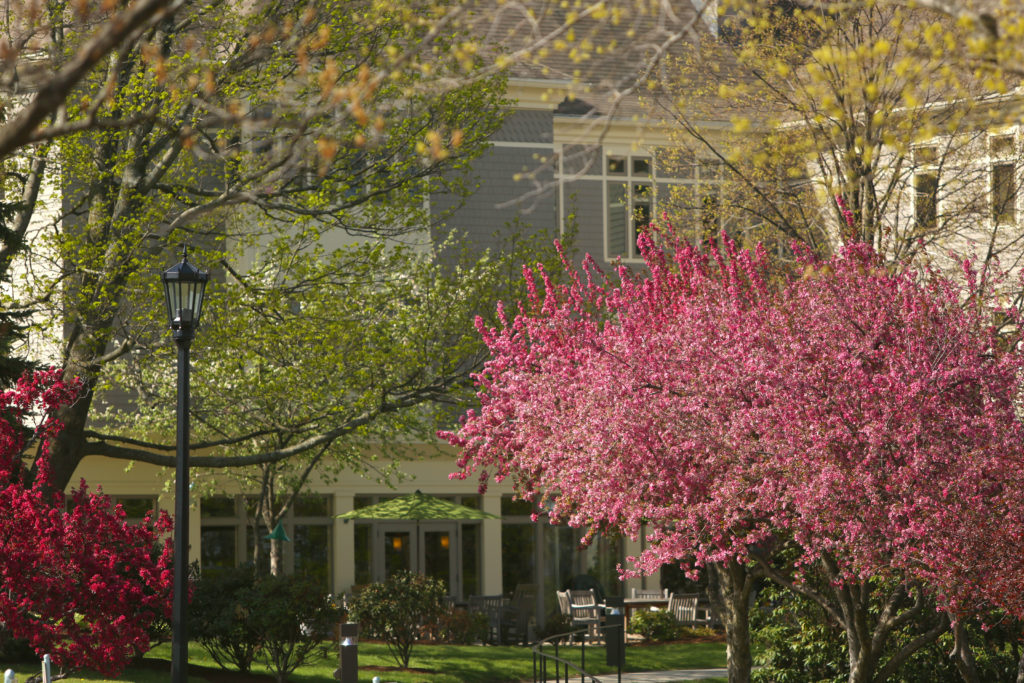Holy Cross’ efforts continue to show! The College’s carbon footprint is almost 48% less than in 2007, with 12,053 metric tons of carbon dioxide equivalent (MTCDE) recorded for 2017. Heating and cooling continues to be the biggest carbon emitter (and the greatest focus for the Department of Facilities). Waste and the Holy Cross vehicle fleet are the smallest emitters at less than 2% each.
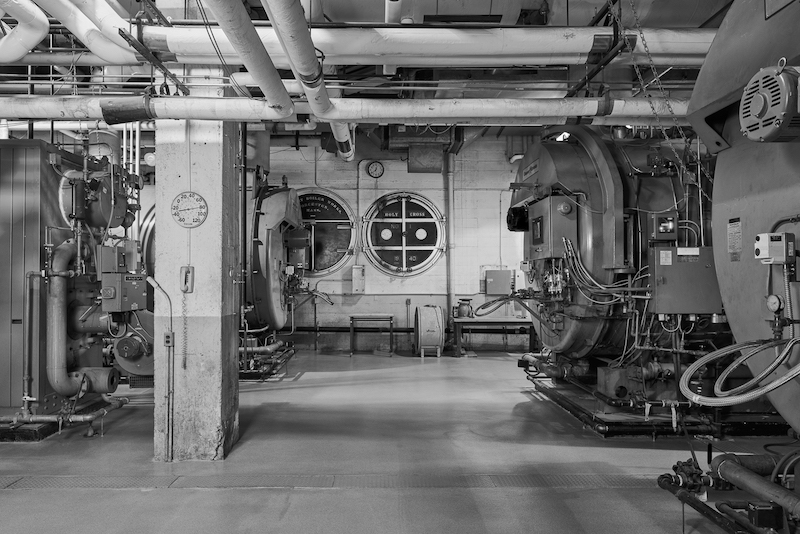
Heating & Cooling
During those nippy nights and scorching summers, Holy Cross’ physical plant takes the spotlight. At the heart of campus, and the College’s carbon footprint, the physical plant heats 67% of Holy Cross’ buildings. Natural gas fuels this process. To maximize efficiency, consequently cutting carbon emissions, the College has updated boiler controls and added insulation to steam pipes.
Don’t worry, the College hasn’t ignored the other 33% of campus buildings. A neat infrared camera system measures building surface temperatures, which allows Facilities employees to identify and rectify heat loss. Individual buildings also possess energy recovery systems and extensive insulation to keep comfortable air indoors and unwanted air outdoors.
Renewable Electricity
Holy Cross uses quite a bit of electricity each year. In 2017, the campus used 21,490,864 kilowatt hours. That’s equivalent to watching over 53.5 billion cat videos! However, electricity accounts for zero percent of the College’s carbon footprint. Why? Holy Cross purchased a long term contract for hydropower (electricity fueled by moving water). Considered a renewable fuel source, hydropower produces zero carbon emissions.
Commuting & Travel
Not only does Holy Cross account for carbon emissions produced on campus, but the College includes emissions produced by Holy Cross community members engaged in college-related activities (think: faculty attending conferences, staff driving to work, or student-athletes heading to games). Thus, the College includes commuting and air travel in its annual carbon footprint. Unfortunately, commuting and travel emissions have increased by almost 25% since 2007.
Offsetting
#Composting is trending! Kimball Main Dining Hall & Kimball Food Court recycle or compost 100% of all waste. This helps Holy Cross reduce its trash stream, and also offsets some of the College’s carbon footprint. The composting process takes carbon out of the air, which subtracts tonnage off the overall footprint. Meaning? The more Holy Cross composts, the better for the College’s carbon footprint! In 2017, Holy Cross offset 36 tons of carbon through composting, the equivalent of 145,991 burritos.


